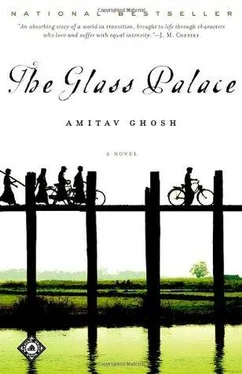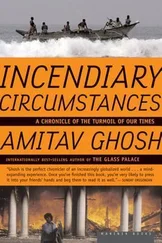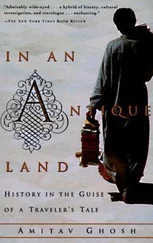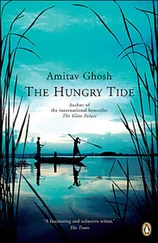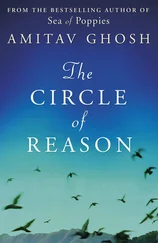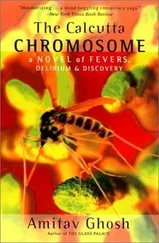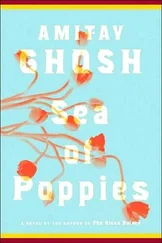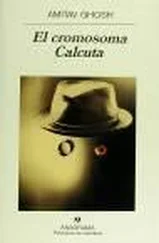Saya John had looked hard at the trees and had not been able to name them. ‘What are they?’
‘Rubber.’
Some nine years before, Mr Tan Chay Yan, scion of a well-known Peranakan Chinese family of Malacca, had converted his pepper garden into a rubber plantation. In 1897 this had seemed like a mad thing to do. Everyone had advised against it: rubber was known to be a risk. Mr Ridley, the curator of the Singapore Botanical Gardens, had been trying for years to interest British planters in giving rubber a try. The imperial authorities in London had spent a fortune in arranging to have seed stocks stolen from Brazil. But Mr Ridley was himself the first to admit that it might take as many as ten years for a rubber plantation to become productive. Malaya’s European planters had backed away on learning this. But Mr Tan Chay Yan, persevering undeterred, had succeeded in milking rubber from his trees in three short years. Now everyone, even the most timid British corporation, was following his lead, planting rubber; money had been pouring into the city. The B.F. Goodrich company had sent representatives all the way from Akron, Ohio, urging the planters of Malaya to plant this new crop. This was the material of the coming age; the next generation of machines could not be made to work without this indispensable absorber of friction. The newest motor cars had dozens of rubber parts; the markets were potentially bottomless, the profits beyond imagining.
Saya John had made enquiries, asking a few knowledgeable people about what was involved in planting rubber. The answers were always short: land and labour were what a planter needed most; seed and saplings were easily to be had. And of the two principal necessities, land was the easier to come by: of labour there was already a shortage. The British Colonial Government was looking to India to supply coolies and workers for the plantations.
Saya John had begun to toy with the idea of buying some land for Matthew, his son. He’d quickly discovered that land prices around Malacca had risen steeply; he was advised to travel north, in the direction of the Siam border. He’d set off, not quite convinced still. He was too old to start up a vast new project, this he knew; but there was Rajkumar to be counted on — he would know what to do about building a workforce — and of course there was always Matthew, who had been away in America many years. No one knew exactly what Matthew was doing there; the last he’d heard, the boy had travelled east, to New York. There had been a letter a while back; he’d said something about looking for a job— nothing at all about coming home. Perhaps this was exactly what was needed to bring the boy home: a huge new enterprise to which he could dedicate himself: something that would be his own; something that he could build up. He could see himself growing old, living with Matthew — the boy would have a family, children; they’d live together in a quiet place, surrounded by trees and greenery.
These ideas were still forming in his mind, when he glimpsed the perfect place, from the deck of a ferry boat: the south-facing slope of a mountain, an extinct volcano that reared out of the plain like the head of some fantastic beast. The place was a wilderness, a jungle; but at the same time, it was within easy distance of the island of Penang and the port of Butterworth.
‘I’ve got land there now,’ Saya John said to Rajkumar, ‘and it’s waiting for the day when Matthew comes back.’
Rajkumar, newly married and eager in his anticipation of the pleasures of domestic life, was not disposed to take his mentor seriously. ‘But, Saya, what does Matthew know about rubber or plantations?’
‘It doesn’t matter. He’ll find out. And of course, he’ll have you to help him. We’ll be partners, the three of us: you, me, Matthew.’
Rajkumar shrugged. ‘Saya, I know even less about this than Matthew does. My business is timber.’
‘Timber is a thing of the past, Rajkumar: you have to look to the future — and if there’s any tree on which money could be said to grow then this is it — rubber.’
Rajkumar felt Dolly’s hand, pressing against his own, in anxious enquiry. He gave her a reassuring nudge as though to say: it’s just one of the old man’s fancies; there’s no need to worry.

In the immediate aftermath of her widowhood, Uma returned to Lankasuka, her parents’ house, in Calcutta. Hers was a small family: she had only one brother, who was much younger than herself. Their house was spacious and comfortable, although not grand: it had two storeys, with a semi-circular balcony on each. The rooms were airy and bright with high
ceilings and stone floors that stayed cool even in the hottest of summers.
But Uma’s homecoming was not a happy one. Her father was an archaeologist and a scholar: he was not the kind of man to insist on all the customary observances of a Hindu widowhood, but nor was he so enlightened as to be wholly impervious to the strictures of his neighbours. Within his lights he did what he could to mitigate the rigours of his daughter’s situation. But as a widow living at home, Uma’s life was still one of rigid constraints and deprivation: her hair was shaved off; she could eat no meat nor fish and she was allowed to wear nothing but white. She was twenty-eight and had a lifetime ahead of her. As the months dragged by it became clear that some other solution would have to be thought of.
Uma was now a woman of independent means, the beneficiary of a very substantial pension. During his lifetime the Collector had held one of the most lucrative jobs in the Empire, and on his death it was discovered that he had made many astute investments, several of them in Uma’s name. With her livelihood assured, and no children to care for, there was nothing to hold her at home and every reason to leave. The matter was decided when she received a letter from Dolly, inviting her to visit Rangoon. It was evident that the best possible solution was for her to go abroad.
On the journey over, Uma kept her head covered, with a shawl to hide her shaven head. Dolly and Rajkumar met her at the Barr Street Jetty and the moment she stepped off, Dolly tore away her shawl.
‘Why are you hiding your face?’ she said. ‘I think you look nice like that.’
Dolly and Rajkumar brought Uma directly to their new home in Kemendine: they had only recently moved in and the house was still under construction. Having been very rapidly erected, the house was a haphazard, old-fashioned structure— two floors of interconnected rooms, grouped around a square courtyard. The floors were of polished red stone and the courtyard was lined with corridor-like balconies. The balustrades were of spindly wrought-iron. Along the walls of the compound there were a number of small outhouses. These were inhabited by watchmen, gardeners and other household employees.
Rangoon was almost as much a foreign city to Dolly as it was to Uma, and the two of them began to explore it together: they climbed the steps of the Shwe Dagon Pagoda; they visited Uma’s uncle in kalaa-basti, the Indian quarter; they attended the pony races at the Kyaikasan racecourse; they went walking in the narrow streets of Syriam, across the river, they promenaded around the Royal Lakes and went for drives around the Cantonment. Everywhere they went, Dolly was courted, sought after, besieged by armies of acquaintances, asked endless questions about the King and Queen and their life abroad. This was a subject of universal interest in Burma, and Dolly’s sharing of the Royal Family’s exile made her something of a celebrity herself.
Uma’s time passed very pleasantly. She was often invited out with Dolly and was never at a loss for things to do. But as the weeks passed she found herself growing ever more painfully aware of the distance between Dolly’s ebullient happiness and her own circumstances. In the past, Uma had often wondered about Dolly’s marriage: had she married Rajkumar in order to escape the imprisonment of Outram House? Or was it just that she had fallen in love — that and nothing else? Now, watching them together, Uma saw that these reasons were not exclusive of each other: that each of these motives had played a part in creating a wholeness, as in the fitting together of the misshapen pieces of a puzzle. She saw also that this was a completeness that she, who had always prided herself on knowing her own mind in all things, had never known and perhaps would never know, because it was not within her to yield to the moment, in Dolly’s way.
Читать дальше
Конец ознакомительного отрывка
Купить книгу
